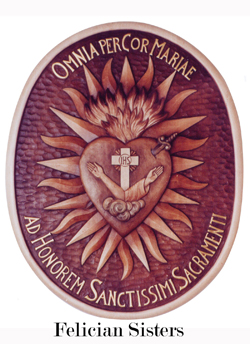|
St. Florian
The heart of an ethnic community is so often its church, and in the case of Hamtramck, most immigrants look to St. Florians (the oldest church in the city) as its focal point. It was established in 1907, when the Roman Catholic Archdiocese of Detroit recognized a need for it among the waves of incoming Poles, and certainly, the opening of Dodge in 1910 was instrumental in growing the congregation.
Initially, services were held in a storefront, and the first church was dedicated on January 10, 1909. The church we know today, standing majestically over the often grim industrial skyline of Hamtramck, was commissioned in the 1920’s. The American architect Ralph Cram, known for his collegiate and ecclesiastical buildings, design the English Gothic structure which won the American Architect Award in 1929, the year after the church’s consecration.
The structure is dominated by an ornate stained glass rose window. In each stained glass window flanking the nave, the design incorporates images that depict a familiar narrative story. One window includes the figure of Mikolaj Kopernik (Nicolaus Copernicus), the Polish astronomer who challenged the Catholic Church's traditional view that the earth is the center of the universe.
Pastor Fr. Tomasz Sielicki is a dedicated guardian of the traditions of Catholocism, and points proudly to his own Polish heritage and the continued popularity of St. Florian’s Polish language services, Sunday mornings at ten and twelve. “St. Florian’s is the ‘mother church’ of Hamtramck,” he says.
Among the milestones in St. Florian’s fascinating history, one of the most sacred and memorable occurred in 1969, when the then-Bishop of Krakow, Karol Cardinal Wojtyla, celebrated Mass there. Wojtyla, of course, would go on to become Pope John Paul II. The church also served as a backdrop for some scenes in the movie Polish Wedding.
|







